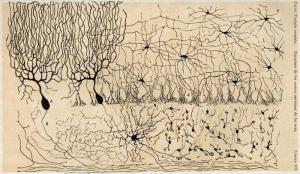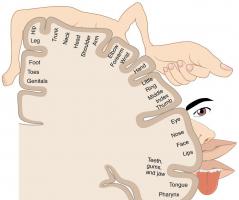Neurobiology of ADHD: the brain bases of this disorder
The acronym ADHD responds to the name of attention deficit hyperactivity disorder, a complex clinical entity that affects especially in children and adolescents, and whose main symptoms include abnormal levels of hyperactivity, impulsivity and / or inattention.
At the moment, Although ADHD is considered to be a brain disorder, the exact neurobiological mechanisms are unknown underlying this condition, and an effective genetic marker for make a reliable diagnosis, regardless of psychological tests and cognitive evaluations and behavioral
In this article we review the current state of research on the neurobiology of ADHD, the main genetic and brain imaging studies that have been carried out, and the theories that attempt to explain how and why this disorder develops.
- Related article: "Neuropsychology: what is it and what is its object of study?"
What is known about ADHD?
Attention Deficit Hyperactivity Disorder (ADHD) is a clinical picture diagnosed on the basis of persistent levels of hyperactivity, inattention, and impulsivity
. Currently, there are no biomedical tests capable of detecting ADHD and the diagnosis is based on the observation of certain behavioral symptoms.The lack of a physical cause or of several causes that demonstrate the existence of this disorder has generated some controversy in the community scientifically and in society in general, and psychostimulant medication-based treatments for children and adolescents have been questioned. However, the effectiveness of drug treatment in many cases has led researchers to suspect that there is an underlying neurobiological etiology.
Current research on ADHD from a neurobiological point of view focuses, above all, on the theoretical framework that implies study the alteration of dopaminergic activity (its receptors and transporters), as well as its implications in the generation of symptoms of this disorder.
Today, among the neuroscientific community, the concept of deficit in the inhibitory control of responses is still used, which is the disability that people with ADHD have to control and inhibit impulses and cognitive responses, which ends up interfering with the executive functions that plan, coordinate and execute behaviors end.
Current research on ADHD is therefore aimed at finding the neurobiological mechanisms that explain the disorder and on genetic markers that serve as a reliable diagnostic basis. Let's see below what are the main theories about the neurobiology of ADHD.
Neurobiology of ADHD
There is an extensive scientific literature on the neurobiology of ADHD focused on motivational processes and cognitive control in children with this disorder. For example, behavioral reinforcement has been extensively investigated and in recent years there have been great advances in the understanding of the neural mechanisms involved in the processing of reinforcement.
Dopamine has been suggested to play an important role as a mediator in the cognitive enhancement signal. The structures that have emerged to play a central role in reinforcement learning mechanisms are those innervated by. dopaminergic projections of the midbrain. In fact, some of these same structures have been implicated in ADHD, since in this disorder there is an alteration in reward processing.
The dopaminergic theory is based on the existence of deficits in two regions in which dopamine plays a crucial role: the cincture anterior, whose hypoactivation produces a cognitive deficit; and the caudate nucleus, whose overactivation generates an excess of motor behaviors, typical in subjects with ADHD.
Although there appears to be considerable evidence in favor of the dopaminergic theory, research has also focused on the role of other potential candidate genes, such as the norepinephrine transporter NET1, or the dopamine receptor gene DRD1. However, at the moment no biological marker of ADHD has been detected and its diagnosis is still based on the observational method and neurocognitive evaluations.
- You may be interested: "ADHD in adolescence: its characteristic effects and symptoms"
Genetic studies
Research with family members has consistently indicated a strong genetic contribution to ADHD. Twin studies have shown a high heritability of this disorder. It is likely that multiple genes exerting a moderate effect are involved, as no single gene has been found to play a critical role to date.
Researchers have focused on studying genetic variations in the dopamine D4 receptor and the dopamine transporter. DAT1, but it has been shown that individually they only exert weak effects and none is necessary or sufficient for the occurrence of the ADHD. In fact, a recent review of several molecular genetic studies concluded that there were associations significant for four genes in ADHD: dopamine receptors D4 and D5, and dopamine transporters and serotonin.
However, there is a growing recognition among the scientific community that there is a potential interaction between genetics and environmental risk factors. Without diminishing the importance of genetic factors, environmental factors have also been identified that increase the risk of suffering from ADHD, such as exposure to lead or polychlorinated biphenyls in early childhood, although their effects are not specific to the ADHD.
Brain imaging studies
In brain imaging studies, serious anatomical changes in brain dimensions associated with ADHD have been observed. The most consistent finding is a reduction in overall brain size that persists into adolescence, and the reduction of the size of various brain regions, such as the caudate nucleus, the prefrontal cortex, the white matter and the corpus callosum, and the cerebellar vermis.
In a meta-analysis carried out in 2007 it was concluded that the caudate nucleus and globus pallidus, which contain a high density of dopamine receptors, were smaller in subjects with ADHD compared to control groups. In addition, a decrease in blood flow in regions of the striatum has also been observed, as well as changes in the binding of the dopamine transporter.
Cortical thickness studies have also shown changes in ADHD. A regional reduction in the thickness of the cerebral cortex associated with the DRD4 allele has been detected, which is widely related to the diagnosis of ADHD. This cortical thinning is most evident in childhood and, to a large extent, appears to resolve during adolescence.
Tractography images have also detected alterations in the frontal and cerebellar white matter of children and adolescents with ADHD. On the other hand, in the reinforcement and reward tasks, in subjects with ADHD a preference is observed for the immediate over the delayed reinforcement. And in studies with functional magnetic resonance imaging in adolescents with ADHD it has been shown that there is a reduction of the ventral striatum when the reward is anticipated, contrary to what happens with the control subjects in which there is an activation of this brain region.
Bibliographic references:
Curatolo, P., D'Agati, E., & Moavero, R. (2010). The neurobiological basis of ADHD. Italian journal of pediatrics, 36 (1), 79. Kollins, S. (2009). Genetics, neurobiology and neuropharmacology of attention deficit hyperactivity disorder (ADHD). Spanish Magazine of Toxicomanías, 55, 19-28. Yunta, J. TO. M., Palau, M., Salvadó, B., & Valls, A. (2006). Neurobiology of ADHD. Acta Neurol Colomb, 22 (2), 184-189.


